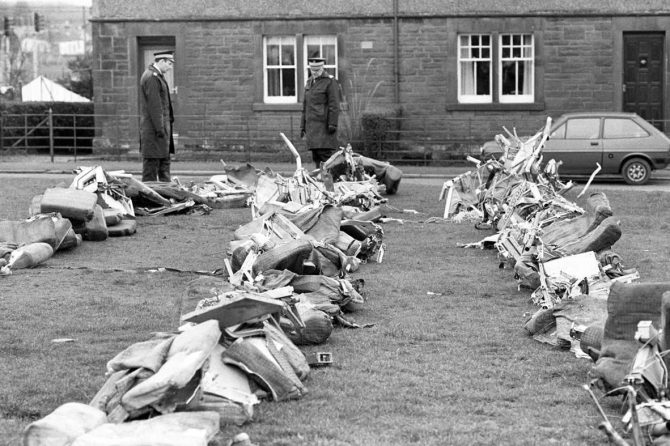Harmonizing Technique and Mental Strength in Billy Casper’s Golf Instruction
Golf is a unique blend of technical skill and mental resilience, intricately reflected in the teachings of the iconic golfer Billy Casper. With a remarkable career that includes three major championships and an important role as an instructor, Casper has greatly shaped how players engage with the sport. This article aims to explore his teaching methods, focusing on how he seamlessly integrates technical skills with mental toughness. By analyzing his specific techniques—from swing mechanics to pre-shot rituals—alongside the psychological strategies he promotes, we will demonstrate how Casper’s holistic approach enhances golfers’ performance and strategic thinking. Moreover, this discussion will place Casper’s philosophy within the wider context of golf instruction, showcasing its importance for players at all levels who aspire to improve their game. Through both empirical insights and personal anecdotes, we will reveal what makes Casper’s lessons not just about improving one’s game but also about fostering a resilient golfing mindset.
Techniques for Mastering Swing Mechanics in Billy Casper’s Teaching
To refine swing mechanics effectively, Billy Casper underscores the necessity of understanding body positioning and movement fundamentals. A key element of his philosophy is adopting an athletic stance, which provides balance and power throughout the swing. Golfers are encouraged to:
- Adopt a shoulder-width stance for enhanced stability.
- Slightly bend the knees to facilitate effective weight transfer.
- Rotate hips, keeping upper body engaged to generate speed.
This well-defined posture not only boosts performance but also ensures a consistent swing plane—essential for accuracy and distance.
An additional technique emphasized by Casper involves mastering the arm swing, which is crucial for energy transfer during shots. The arms should move fluidly with body rotation for optimal results. To excel in this area, players should focus on:
- Keeps arms relaxed, allowing natural swinging motion.
- Initiate swings from lower body movements, promoting synchronization.
- Aim for a unified takeaway motion, maintaining connection between arms and torso.
This method enhances shot power while ensuring smooth follow-throughs that minimize injury risk and improve overall performance.
Mental visualization combined with course management plays vital roles in refining effective swing mechanics. Casper encourages golfers to create vivid mental images of their desired shot trajectories before execution. This mental readiness can be broken down into key components:
- Picturing successful shots during practice sessions to reinforce positive muscle memory.
- Establishing routines to ground oneself before taking shots helps enhance focus while reducing anxiety.
- Adjusting strategies based on course conditions by visualizing necessary changes due to environmental factors like wind or terrain.
Furthermore, integrating mental exercises—such as simulating competitive conditions—provides a fuller preparation. This approach not only develops a golfer’s physical capabilities but also enhances their ability to remain calm and focused during critical moments.
The Importance of Mental Resilience in Boosting Golf Performance
Mental resilience forms a foundational aspect crucial for golf success when facing various challenges during play. Players often encounter pressures—from competitive stakes to personal expectations—that can cloud their focus or hinder performance levels altogether.
By nurturing resilience within their mindset, golfers can maintain both emotional stability and positivity even amid adversity. This adaptability enables fast recovery from mistakes such as missed putts or errant drives; thus ensuring consistent performances throughout rounds.
Strategies aimed at developing this essential trait include actionable practices like:
– Setting clear goals that provide direction.
– Utilizing visualization techniques enabling them to mentally rehearse successful outcomes.
– Practicing self-compassion by viewing failures as growth opportunities rather than setbacks.
Engaging regularly in mindfulness exercises further aids concentration by grounding individuals within present moments; helping dispel distractions while enhancing focus during critical phases.
Moreover, mindset development contributes substantially towards overall golfing success through fostering supportive team environments. When individuals exhibit resilience, it positively influences peers creating cultures rich with encouragement and support. The synergy between technique mastery alongside robust psychological frameworks cultivates atmospheres where collective motivation thrives amidst obstacles faced together. By maximizing both skill sets along with psychological strengths, golfers achieve peak performances reminiscent of those championed by legendary figures like Billy Casper himself throughout his illustrious career.
Strategic Course Management: Lessons from Billy Casper’s Approach
Billy Casper’s strategic course management philosophy emphasizes thoughtful approaches tailored specifically for each situation encountered on courses. Golfers can significantly elevate performance by assessing circumstances while adapting strategies accordingly. Casper focused on several core components during his rounds including:
- Shot Selection: Carefully choosing appropriate clubs and shot types based on course conditions as well as personal strengths.
- Course Familiarity: Understanding layouts and nuances of each course enables informed decision-making during play.
- Patience & Discipline: Remaining composed while resisting temptations for unneeded risks which could lead to trouble.
Effective course management not only involves smart decision-making but also harnesses mental resilience. Casper demonstrated the necessity of cultivating mindsets capable of accommodating challenges he faced throughout his career. His belief was that mental aspects are just as crucial as the physical techniques; thus developing a framework approach for each hole is vital. As an example, a golfer might assess:
| Main Psychological Traits | Description |
|---|---|
| Main Focus | The ability to maintain concentration whilst avoiding distractions during rounds. |
| Main Confidence | The belief in one’s capabilities for executing shots and recovering from mistakes. |
| Main Adaptability | The capacity to adjust strategies based on changing conditions or performance successes. |
This dual approach—melding technical prowess with effective psychological strategies—highlights Casper’s understanding of the key factors elevating a golfer’s game. His ability to visualize each shot combined with meticulous planning before execution distinguished him as a master strategist on the course. By embracing these principles, golfers can emulate Casper’s excellence, ultimately enhancing overall performance and enjoyment of the game.
Utilizing Visualization Techniques For Enhanced Focus And Confidence in Golfers
Visualization serves as a powerful tool for boosting focus while building confidence among golf players. By employing mental imagery to picture successful shots prior to taking them, players cultivate positive mindsets leading towards improved performances. This process entails envisioning everything from mechanics involved in the swing right down to the desired outcome—the ball landing exactly where intended. Repeated practice of visualization prepares golfers mentally setting an optimistic tone before stepping onto any given course.
To effectively integrate visualization into practice routines, golf players may adopt the following strategies:
- Pre-Shot Visualization: Before addressing the ball, take a moment to picture the entire shot including trajectory & landing spot.
- Positive Outcomes: Focus on the positive results imagining satisfaction accompanying successful shots.
- Breathe & Relax: Inhale deeply whilst visualizing to foster relaxation, clearing the mind of doubts/distractions.
Additionally, golfers track their progress & effectiveness using simple logs documenting efforts. The table below illustrates how this can be achieved:
| Date | Shot Type | Visualization Details | Result |
|---|---|---|---|
| 02/01/2025 | Drive | Imagined straight shot landing 250 yards down fairway | Successful |
| 02/02/2025 | Putter | Envisioned ball rolling smoothly into the hole | Successful |
Recommendations For Practicing Mindset Integration In Daily Routines
Integrating mindset practices into everyday golf activities can significantly boost performance on courses. One effective approach establishes a Pre-Shot Routine that focuses on both physical technique & mental clarity. The routine includes steps like visualizing the shot, intention-setting for the wave, and incorporating deep breathing exercises to maintain composure. By consistently engaging in this routine, golfers effectively create anchors promoting confidence while reducing anxiety when playing.
Incorporating mindfulness practices within training sessions strengthens the mental game. Focusing solely upon breathing and bodily sensations during a few minutes each session helps cultivate awareness of the present moment – critical for maintaining concentration. Techniques such as observational rhythm breathing and tuning into sounds in the environment serve to ground methods before executing shots.
Furthermore, building a supportive community among fellow golf players provides an invaluable resource for tactical strength. Discussing challenges encountered and sharing coping skills fosters community spirit, encouraging individual growth. Regular conversations about technical skills alongside psychological approaches create learning environments ripe for development. Accountability groups dedicated to integration techniques effectively help all members stay committed to improving their games.
Final Reflections
Billy Casper’s teachings epitomize the critical fusion between technical skill & cognitive acuity within golf. Since emphasizing mastery of fundamentals concurrently developing a robust framework, Casper’s lessons provide holistic pathways for player development. Incorporation practices like visualization and consistent pre-shot rituals as discussed in various studies reinforce the concept that resilient minds are not merely ancillary components but vital elements for successful performances. His approach advocates for sound fundamentals—grip, stance, and swing mechanics—while concurrently promoting a strong mental framework to maintain focus and confidence on the course. As golfers eager to enhance abilities refine strategic thinking, embracing both physical and psychological dimensions will undoubtedly lead to elevated results and deeper enjoyment of the sport. Conclusively, Billy Casper’s legacy extends far beyond accolades on the green—it stands as a testament to the enduring value of merging technique with mindset in the pursuit of excellence in golf.






